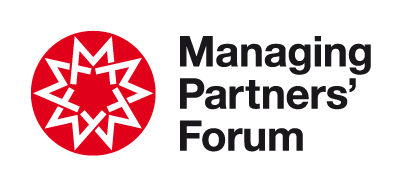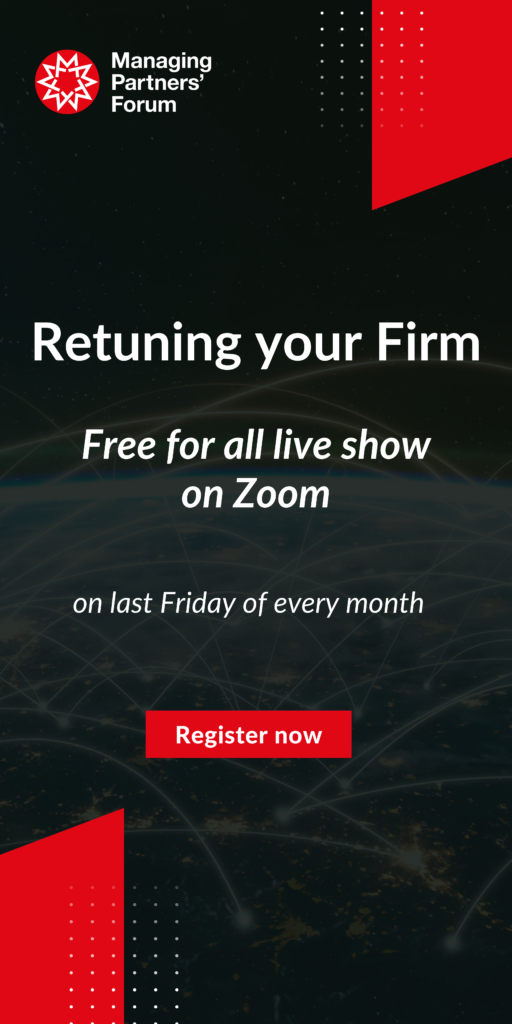Managing Partners’ Forum meeting on influential relationships: high performance
and bias, hosted by BDO, was an interactive presentation led by Graham Cox
director, learning and development at Boundaries Edge, who explored the correlation
between mastering bias and organisational and leadership high performance.
Cox began by explaining that a key tool in espionage is learning how to exploit your
own and other people’s bias. But before we can exploit bias, we have to understand
it. Cox started by looking at how bias happens in the brain and how we can mitigate
against it. Why do we need to do this? Because bias can affect decision-making and
performance.
Bias reflects the complexity of the human condition, and the strongest bias is
perception bias. We are influenced by the way things look or seem, even when
statistics show otherwise, and we make decisions by rule of thumb rather than logic.
For example, 58.4% of Fortune 500 CEOs are over 6ft tall, compared with 7.4% of
the population. This suggests a height bias in appointing CEOs, which may also
relate indirectly to diversity issues.
Because of our instinct to follow our perceptions rather than facts, fake news
influences us massively, particularly when it appeals to our emotions. And the animal
side of human nature leads us to make quick decisions under pressure i.e. based on
how we feel rather than applying logic or careful consideration. Why? Because
reasoning takes nearly three times longer than instinct! Consequently, we make
more decisions with our unconscious brain – sacrificing optimality for efficiency,
consistency and readiness – than with our conscious brain. Because people like
routine, we are more likely to make a biased decision when we are under pressure,
which explains many of the issues that arise in the workplace. Furthermore, we are
easily influenced by confirmation bias – when things happen as we expect them to.
For example, computer games create dissonance between virtual and real
experiences – for example by rewarding shooting or driving!
Of all the decisions we make, 86% are based on feelings and 14% are based on
reason. So how does this play out in the workplace? Evolution suggests that humans
are becoming more logical, yet artificial intelligence (AI) is replacing logical work,
leaving people to make the emotional decisions.
While business/corporate values reside in the logical part of the brain, decisions
around behaviours are emotional – I feel like a cigarette, says the smoker. This
makes it difficult to change a smoker’s behaviour by the logical argument that
cigarettes are expensive and bad for your health. Instead, effective anti-smoking
campaigns feature graphic images that are designed to trigger an emotional
response.
In the corporate world, success is about emotional resonance. And it is why
politicians use emotional rather than factual arguments to win votes. It follows,
therefore, that if we translate organisational values into behaviours, we will change
behaviours.
Cox then turned to six rules of perception bias. The first is that we perceive what we
expect (not what we want). For various reasons, people are often nervous about
walking into a lawyer’s office. This makes it important for lawyers to gain their clients’
trust as quickly as possible.
The second rule is that initial impressions resist change. We were asked to look at
graphics that combined two images – of a man and a woman – and say which we
saw first – responses demonstrated that the image that you first see shapes how you
see subsequent images. This addresses the importance of making a favourable first
impression – and giving it time to sink in. Shake hands with someone and then step
away to get a coffee, advises Cox.
Third is the availability heuristic, which explains workplace selection decisions, i.e. if
you interview more men than women for a role, you are more likely to select a man.
Similarly, if you work in an office full of men, you are more likely to recruit a male
candidate to join them. But because we are influenced as much by images as we are
by experience, images of men and women as leaders will restore some equanimity –
this is borne out by the effectiveness of advertisements, where images we may see
only fleetingly subconsciously influence our choice of products, and the power of
semiotics – logos create an instant impression, he said, instancing the directional
arrows in the FedEx logo and the hidden smile in the Amazon logo.
The fourth rule is that context alters our perceptions, affecting buying decisions and
relationships. In the workplace, we like to confirm our ideas, but instead we need to
include diagnostics in projects and planning. Planning bias leads to large
infrastructure projects running over budget.
Fifth is that people focus on losses rather than gains. If we are 50% unhappy with
our job, we will probably stay, because we will focus on the risk of losing the job
satisfaction we have, but when we believe we are 70% unhappy, we will take the risk
of moving on.
And the sixth rule is about using perceptions and conditioning to change behaviours.
Cox outlined past, present or future mindset. Leaders tend to have a predominantly
future mindset, i.e. they learn from past experience. Effective leaders use
communication tactics to lead change – for example by presenting negative
predictions based on current circumstances before offering new solutions to
overcome projected problems. Awareness of past, present and future mindsets helps
to overcome conditioning bias. An example of conditioning bias is that people feel
safer removing their shoes at airports, even though there has never been a
successful shoe bomber.
Finally, Cox offered some examples of how inherent biases influence behaviours in
the workplace in positive and negative ways.
Powerful negative bias:
• Fear-based responses – i.e. people are worried about signing up for diversity
training, as they feel they may be perceived as being discriminatory/not
diverse
• Hostile attribution bias – i.e. assuming a negative outcome or genuine mistake
is deliberate or discriminatory
Positive bias that builds trust and engagement:
• Appearance bias – i.e. we like people with dilated pupils, so meet people in
half-light
• Familiarity bias – i.e. bringing in a familiar association; pleasant smells are a
particularly powerful engagement tool
• Anchoring bias – if you put a limit on how many items someone can buy, they
will tend to buy more
• In-group bias – the reason why Facebook and social media generally is a
powerful influencer.
Bias is a human factor, so it is hugely complex, but it needs to be addressed
because there is a direct positive correlation between diversity and high
performance. Cox believes that in order to convince organisations to become more
inclusive, diversity needs to be reframed in the context of high performance rather
than risk.
Joanna Goodman

